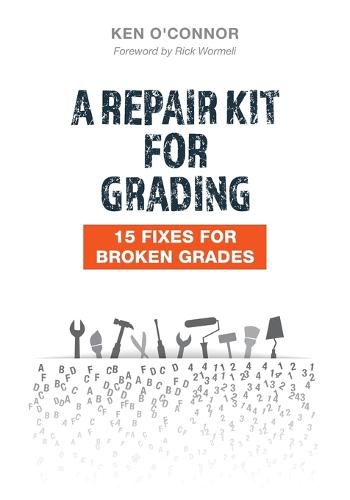Readings Newsletter
Become a Readings Member to make your shopping experience even easier.
Sign in or sign up for free!
You’re not far away from qualifying for FREE standard shipping within Australia
You’ve qualified for FREE standard shipping within Australia
The cart is loading…






This title is printed to order. This book may have been self-published. If so, we cannot guarantee the quality of the content. In the main most books will have gone through the editing process however some may not. We therefore suggest that you be aware of this before ordering this book. If in doubt check either the author or publisher’s details as we are unable to accept any returns unless they are faulty. Please contact us if you have any questions.
Communicating about student achievement requires CALM grades - grades that are consistent, accurate, learning-focused and meaningful.
To meet these four conditions, educators need to ask several essential questions:
To what extent am I confident that students in my school/district receive grades that are consistent, accurate, learning-focused, and meaningful?
To what extent am I confident that the grades I determine for my students accurately reflect my school/district's published learning goals and performance standards?
To what extent am I confident that what I do in grading is aligned with and contributes to my school/district's mission, vision and goals?
If the answers are any less than extremely confident, educators need this revised third edition of A Repair Kit for Grading; 15 Fixes for Broken Grades because it has been extensively revised to provide the fixes to enable educators to move to that high level of confidence. There are many changes in this edition that reflect the new understandings that have occurred in the eleven-plus years since the second edition was written and hopefully make the ideas clearer and more helpful. The major changes in the third edition are as follows:
o The fixes have been reworded so that they start with action verbs indicating what should be done (i.e., do first, don't second);
o The fixes have all been rewritten to some extent with major revisions to fixes 1, 4, 7 and 8.
o All new Educator Vignettes and policy/procedure examples for each fix;
o The references have been updated so that they are mostly from 2016 or later.
$9.00 standard shipping within Australia
FREE standard shipping within Australia for orders over $100.00
Express & International shipping calculated at checkout
This title is printed to order. This book may have been self-published. If so, we cannot guarantee the quality of the content. In the main most books will have gone through the editing process however some may not. We therefore suggest that you be aware of this before ordering this book. If in doubt check either the author or publisher’s details as we are unable to accept any returns unless they are faulty. Please contact us if you have any questions.
Communicating about student achievement requires CALM grades - grades that are consistent, accurate, learning-focused and meaningful.
To meet these four conditions, educators need to ask several essential questions:
To what extent am I confident that students in my school/district receive grades that are consistent, accurate, learning-focused, and meaningful?
To what extent am I confident that the grades I determine for my students accurately reflect my school/district's published learning goals and performance standards?
To what extent am I confident that what I do in grading is aligned with and contributes to my school/district's mission, vision and goals?
If the answers are any less than extremely confident, educators need this revised third edition of A Repair Kit for Grading; 15 Fixes for Broken Grades because it has been extensively revised to provide the fixes to enable educators to move to that high level of confidence. There are many changes in this edition that reflect the new understandings that have occurred in the eleven-plus years since the second edition was written and hopefully make the ideas clearer and more helpful. The major changes in the third edition are as follows:
o The fixes have been reworded so that they start with action verbs indicating what should be done (i.e., do first, don't second);
o The fixes have all been rewritten to some extent with major revisions to fixes 1, 4, 7 and 8.
o All new Educator Vignettes and policy/procedure examples for each fix;
o The references have been updated so that they are mostly from 2016 or later.